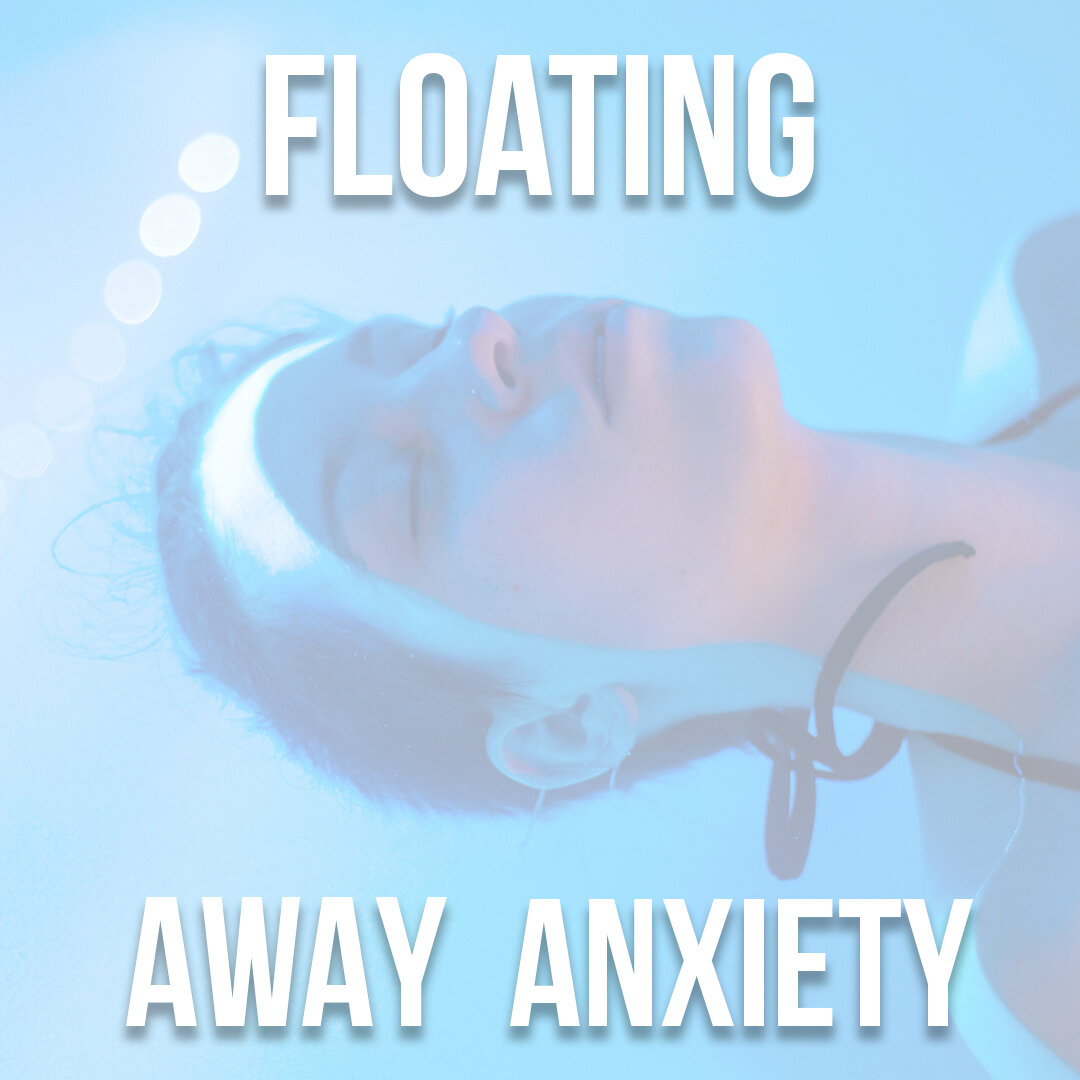New Research Supports Float Therapy For Treatments of Anorexia Nervosa
Anorexia is a notoriously difficult condition to treat but new research into float therapy has opened up a promising solution for supporting those with anorexia.
While much of the news and many scientists around the globe are still inundated by the pandemic, research continues to go on towards quieter pursuits. And as we continue to face stress and feelings of overwhelm, there’s some good in knowing that all hope is not lost for the things that make us feel good.
Floating is known to be an effective treatment for reducing generalized and acute anxiety and new research into the depths of float therapy is now looking at its effects on helping with anorexia and the immune system.
Dr. Sahib Khalsa has been looking at long-term research on anorexia nervous a patients over the last four years at the Float Clinic and Research Center at the LIBR (Laureate Institute for Brain Research). Anorexia continues to be one of the most severe mental disorders in terms of mortality rate and difficulty of treatment. Looking at the effects that floating might have in the treatment of anorexia nervous is highly important and shining a spotlight on the great benefits that natural and safe therapies like floating can have.
So far what the research is uncovering is that floating seems to benefit anorexia patients in two main areas - anxiety levels and body image.
The most significant findings from the research has been showing that floating helps in reducing the anxiety levels in patients, which reflects similar results on float therapy done in studies on healthy individuals as well as those who are dealing with chronic anxiety.
Anxiety levels in the patients with anorexia were reduced by up to 20%, and the biggest effect happens on those with the highest baseline anxiety levels. So floating is great for everyone with anxiety but has the most pronounced effect on those who are in need of the most relief. This is consistent with other research that regularly finds the greatest reductions in anxiety come to those dealing with the most severe anxiety.
The findings on adjusting perceived body image, while not at dramatic as the changes in anxiety levels, is still a significant result coming out of this research. Anorexia tends to be a long lasting and chronic condition in part because there’s a misalignment between the patients’ perceived body weight and real body weight and image. The patients incorporating float therapy saw a shift in how they viewed their body and their idea body type started to realign with a healthier body type. This change was viewed after only a few floats so as further evidence comes out, this result may become even more significant for what long-term float therapy can do for patients with anorexia and body image disorders.
Because of the nature of long-term research, the full results of Dr. Khalsa’s research won’t be complete until 2023 at the earliest but this information is still promising enough at this time to take note of.
If you know anyone with anorexia, consider inviting them in for a float or sharing this article with them to explore float centre’s in their hometown. Dr. Khalsa spent much of the early work into this research establishing the psychological and physical safety of floating for patients with anorexia to be assured there weren’t any contraindications.
The Secret Behind How Floating Dissolves Your Stress and Reduces Anxiety
There’s an incredible amount of pressure put on us from the choices we make each and every day. Not to mention that we are also in the midst of a global health crisis. It’s clear that the stress we face daily can cause a lot of health problems. Many of us recognize the commonly associated physical problems like heart disease and high blood pressure, but stress can also weave its way into presenting as mental health issues like PTSD, depression, and eating disorders.
Most of us can feel the need to recharge and provide ourselves with some of the self-care these days as the world seems to spiral out of control. We want to turn to any solution that may help but there’s always a bit of skepticism when it comes to alternative wellness practices and whether they are as helpful as they claim to be.
Floating is no exception to this.
So let’s dive into some of the science on floating to see just how beneficial it can be for reducing stress.
Float Therapy and Stress Reduction
Dr. Justin Feinstein is one of the most well-known scientists studying the effects of float therapy in his custom lab setup at the Laureate Institute of Brain Research. In a recent Tedx Talk, Dr. Feinstein shared some of his study results about the effects of floating on stress.
The effects were incredible.
Every single person who participated in the study experienced some amount of stress relief. Furthermore, most of the participants saw a significant reduction in their stress levels that lasted for more than 24 hours after just a single float session.
If there was a pill you could take that would allow you to be stress-free for the whole day, who wouldn’t want that?
Floating to reduce stress may be more time-involved than just taking a pill but the benefits of it seem to be even more significant than most anti-anxiety treatments.
And just as importantly, there’s no concern about interactions with other medications or other negative contraindications. It’s one of the safest and lowest risk wellness practices there is.
Get 20% Off Your First Float at Flow Spa
Dr. Feinstein isn’t just studying the effects of floating on people with normal, everyday stress though. He’s looking at stress-related illnesses like PTSD, depression, and anxiety, and finding that the individuals with the highest levels of stress before floating experience the greatest benefit from the treatment. Everyone who floats returns to a baseline level of relief, which means floating will bring you down to a similar level of relaxation as those people who always seems to be as cool as a cucumber.
What’s The Secret Behind Floating?
So the next big question is how does it work? Do we really just lay in the dark and let our minds clear out our thoughts for an hour or so?
This does seem to be the key to it all.
It’s difficult to find the effects of the solitude of floating, where we can’t be bothered by the outside world, anywhere else. Our minds and bodies slow down dramatically, our brains enter a state similar to dreaming, and this all gives us the ability to recharge more quickly.
Before float tanks took over as the most effective and relaxing way to experience this solitude, a psychologist named Dr. Peter Suedfeld did a lot of sensory deprivation research in the 60s and 70s by placing people in completely dark rooms in isolation for 24 hours. The term he used for this was REST (Restricted Environment Stimulation Therapy).
Dr. Suedfeld created a paradigm shift in the scientific community on sensory deprivation. Before this time it was only thought of as torture, as a result of incomplete research and questionable methods performed by researchers that would prime the subjects for a bad experience before the experiment even began.
By keeping the subjects at ease and making the process simple for anyone, Dr. Suedfeld found that participants actually enjoyed the sensory deprivation experience.
Over the years, Dr. Suedfeld found that the benefits of REST carried over to many areas including addiction treatment, helping with autism, enhancing creativity, and reducing stress.
This research was the foundation for the future of float tanks and helped scientists, as well as the wider community, stay open-minded to the benefits of floating and reducing stress.
Since these early days, we’ve come even further in seeing the light that shines in the darkness of sensory reduced environments. You don’t need to spend a full day in the darkness to experience the benefits, a single float session can provide similar benefits.
In his Tedx Talk, Dr. Feinstein comments on how we as humans aren’t designed to be constantly plugged into looking at screens, listening to the cacophonous noise of the city, or sitting under the glare of fluorescent lights all day. We also aren’t supposed to constantly let our minds go wild thinking about our to-do list and everything else that we cram into the 24 hours of our day.
Even if we enjoy having a full and vibrant schedule, these things can wear us out and add to the stress of our daily lives. Taking a break is our chance at hitting the reset button, and as we’ve seen, floating has been proven to be one of the most effective ways to do that.
Floating Away Anxiety
Float Therapy for Anxiety Relief
It is so hard to stay grounded and focus on anything other than the thoughts swirling around in your head when you are feeling overwhelmed.
That chest pounding, hard to breathe anxiety feels like the worst thing ever.
And it’s so hard to get away from.
Often when we feel like this, our bodies hold on to that tension in ways we don’t even realize in the moment.
Bringing our bodies back into awareness when our mind is on overdrive is one of the most effective ways for coming back to the present and recognizing that everything is going to be ok.
It is for this reason that research into float therapy has been very promising in terms of helping to relieve anxiety.
Floating can significantly reduce anxiety and lower levels of stress hormones in the body.
The feeling of weightlessness in the float tank lets your tension disappear like a clenched fist opening up.
It doesn’t even take being a meditation guru to experience this beneficial effect of floating. The unique environment, designed to reduce all external stimuli tricks your brain into letting go into blissful nothingness and calm. (It is for this reason that researchers have termed float tanks as R.E.S.T for Restricted Environmental Stimulation Therapy).
And research like this that has led to more funding for studies on floating in the last five years.
Labs in the States are now looking at the long-term benefits of floating for chronic anxiety and pain disorders and as a way to help veterans with PTSD.
This video from the Flow Spa Experience course goes into further details on the best practices for using float therapy for anxiety relief.
If you want to learn more, you can get access to the full Flow Spa Experience course for free at www.flowacademy.ca/fsx





